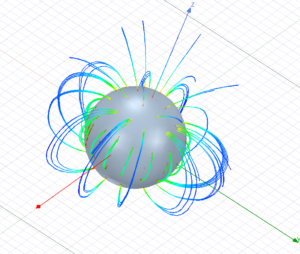MRS Science
Magnetic Resonance Spectroscopy is naturally appropriate for in vivo testing because it is non-ionizing, an important consideration for safety, and provides detection of all target nuclei within the sample, typically 1H hydrogen protons for metabolite quantitation.

Because a hydrogen proton has charge, mass, and spin it has an intrinsic magnetic moment and angular momentum, and the ratio of these, called the gyromagnetic ratio, is known precisely. The basic MRS experiment immerses a sample in a strong static magnetic field, termed the B0 field to polarize the sample with a net magnetic moment. Applying an external magnetic field exerts a torque on this net magnetic moment. Consequently, like spinning top precession in a gravitational field, the induced magnetization will precess about the axis along which B0 is directed at a precise angular frequency, known as the Larmor frequency, given by the product of the gyromagnetic ratio and the B0 field magnitude. Interrogation of the sample is performed with an oscillatory excitation field, called B1, nominally tuned to the Larmor precession frequency of the protons. The induced magnetic resonance, known as the free-induction decay (FID) signal, can be analyzed in the time and frequency domains to yield important information about the structure and chemical composition of the sample.
Electrons orbiting a given nucleus also produce a net magnetic moment, generally opposing the nuclear magnetic moment given their opposite charge, and the magnitude of this effect depends on the chemical bonding environment. Thus, each species of hydrogen proton in a molecule has a specific resonance frequency offset from the nominal Larmor frequency. This offset frequency is termed chemical shift and is expressed in ppm relative to the Larmor frequency of a reference compound in the same B0 field. Chemical shifts are precisely known and highly reproducible for different species of hydrogen protons and natural abundance 13C in common metabolites. Furthermore spectral line groupings and relative amplitudes indicate coupling between neighboring spins in a molecule. Thus high-field MRS plays a vital role performing structural elucidation of small molecules in the life sciences, especially in drug discovery. MRS has incredible selectivity, an important attribute to ensure in vivo testing is specific to a target analyte. MRS is also quantitative because resonance peak areas are proportional to the number of nuclei and can be referenced to the water signal, an electronic calibration signal, or another tightly bio-regulated metabolite to give a concentration.